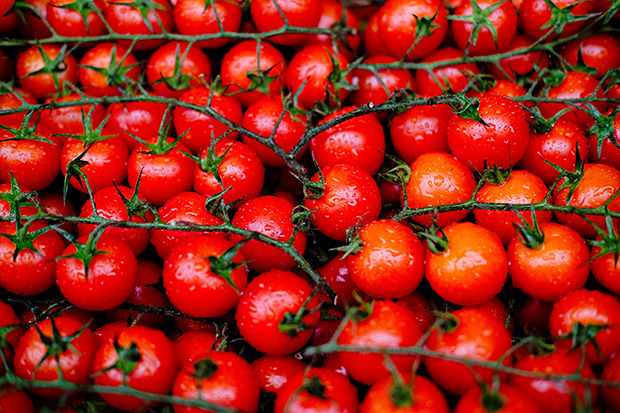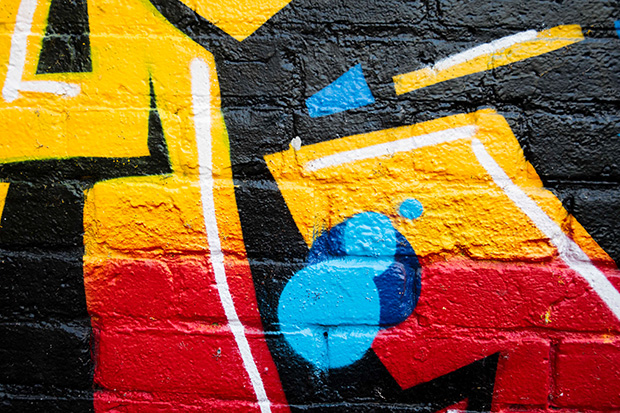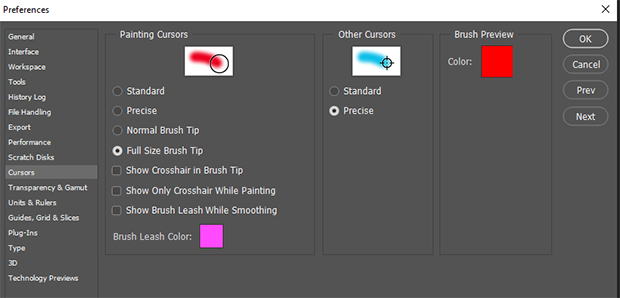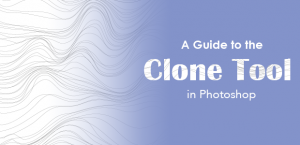How To Change Color In Photoshop With Eyedropper
Guide to the Eyedropper Tool in Photoshop
past Alex Coleman on Mar 4, 2020
Practise y'all want to know more about how Photoshop handles color selections? The Eyedropper Tool tin can help y'all select colors to contribute to a selection, make color correction changes or add to your Photoshop color palette. Photoshop uses the Eyedropper Tool to make direct color selections, but you can use the Eyedropper Tool with other tools and adjustments throughout the plan, too.
Some of these tools include:
- The Color Picker
- Slope Tool
- The HSL, Color Residual and White Residual Tools
- Levels and Curves Adjustments
- The Colour Slider and Color Range Selector
- Replace Colour Tool
Because so many other tools rely on the Eyedropper Tool, it's important to empathise how it works. This guide to the Eyedropper Tool in Photoshop explores what information technology is and how y'all tin can use it to encounter your needs. We'll also offer some references to other guides that tin can help you conquer problems specific to the Eyedropper Tool.
That's quit a lot to cover, and then allow'south get started!
What Is the Photoshop Eyedropper Tool?
You'll find Photoshop'south Eyedropper Tool in the left-hand vertical toolbar, which also contains the Crop Tool, Clone Stamp Tool, Magic Wand Tool and Brush Tool. While the toolbar is its abode location, y'all can also detect the aforementioned functionality in a number of adjustment menus, as well every bit the color palette itself. The Eyedropper Tool provides lets yous select a specific color in an image or document.

Like many of Photoshop'southward tools, the Eyedropper Tool has parameters yous can arrange to help refine your sample results. If y'all access the tool from another interface, like an adjustment panel, your adjustment options may exist more express, though. Or, in the case of the Color Range Selector, more expansive!
Sampling with the Eyedropper Tool
By default, the Eyedropper tool allows y'all to select the colour value of a single pixel in a document. Photoshop then stores this color in your color palette as the primary colour. While a left click with the tool will perform this action by default, a right click presents your first fix of alternating choices. These options include irresolute the tool's sample size and storing the color data in alternate formats.
Changing the tool'southward sample size will, of class, take a straight impact on its operation. By default, the Eyedropper tool samples i pixel. That ways it will only accept the colour of the verbal pixel yous click on when you make a selection.
Challenges in Sampling from Photos
While such a small-scale sample may work for digital documents with broad patches of unmarried, uniform colors, it may not work well on things like photos. Since photos don't have perfect acuity or truly uniform colors, making a unmarried point pick tin can crusade problems.
For instance, consider what happens when you select color from the border of an object in an paradigm. Due to chromatic aberration, the colour selection you make may be too purple or dark-green relative to the actual color of the field of study.
You may also notice that the Eyedropper Tool's default pick surface area causes in effect when you sample from an area in a photo that appears to take uniform color.
Let's imagine selecting a color sample from a shirt in a photograph. The shirt looks to u.s.a. to be a uniform colour. Just, in reality, when you zoom into the shirt at the pixel level, you'll see a diversity of different colors. And, digital noise often present in photographs to some degree but exacerbates the pixel issue. Thus, selecting a single signal in this instance may issue in a drastically unlike color than y'all intended.
While selecting the wrong color isn't a disaster, information technology is inconvenient. You could always discard a selection and try again, but wouldn't it be nice if your choice was right the get-go fourth dimension?
Adjusting Sample Size
When y'all're working with these more complex subjects, consider changing the Eyedropper Tool's sample size. You can make this change in two ways: either past changing the sample size selection in the toolbar drib-downward menu from the menu bar, or via the previously mentioned right-click drop-downwardly menu. If you'll be making a number of selections, try directly changing the sample size via the tool options.

When first working with the tool, make sure to requite both selection modes a attempt. Point sampling definitely has its uses, although you should consider defaulting to at to the lowest degree a iii by 3 Average sample mode for near photograph work.
Adjusting the tool options straight provides an additional do good. With larger sample sizes, information technology tin exist difficult to visualize where exactly the tool volition sample from. Y'all tin can prepare your sample size to sample an area every bit large as ten,000+ pixels, and that'due south hard to eyeball.
Sampling Ring
To be more precise with large sample areas, brand sure to select Show Sampling Ring from the tool options panel. With this selected, y'all can press and hold the left mouse button to testify a ring with your electric current palette color and potential new palette colour. The band shows your old palette color at the lesser and the new sample or new average sample at the height of the ring.
Using the sampling ring characteristic tin can too make it like shooting fish in a barrel to refine the color you lot selected. For instance, if y'all select a color, and then realize it isn't quite correct, y'all can quickly compare your new sample and your previous selection directly from the ring.
Color Swatches
Remember to make use of your power to swap between 2 colors in the color palette. Each option yous brand with the Eyedropper Tool replaces the master colour in the palette, or the topmost colored square. To swap between the primary and secondary colors, click the 2-way arrow icon in a higher place the palette, or use the keyboard shortcut x.
You can reroute this shortcut to other keys if y'all wish. These foreground and background colors effectively serve as two readily bachelor color options. Assuming y'all aren't actively using a tool, you can toggle between the two colors any time.
For more than information on working with colors in Photoshop, bank check out our guide on how to replace colors in Photoshop. Having the ability to manually select a number of colors is a huge help in this procedure, so brand sure to endeavor it out! Information technology can be keen practice for working with the eyedropper tool as well as edifice good muscle memory when using the colour palette.
For example, y'all may find that you demand to make 2 selections. To exercise that, use the picker to select your first colour, then swap to the background color and make a selection. If, instead, you take to brand a selection but aren't sure what tone you need, you lot can hedge your bets past making two selections of a similar color and using whichever is closer.
This technique too preserves your original color selection, if you need it, by "hiding" information technology in the groundwork palette.

Best Uses for the Photoshop Eyedropper Tool
The best uses for the Photoshop eyedropper tool are pretty elementary. Utilize the Eyedropper Tool whenever you lot need to select a color from your document or paradigm! The tool tin can help you match the colour of your brush to those already in your image. In essence, the Eyedropper Tool takes the guesswork out of selecting the correct color for your epitome.
Of course, if y'all have HSL, CMYK, RGB or Hex codes for the colors you lot need, use those instead of relying on the Eyedropper Tool. Capturing the exact colour is important, especially if y'all're doing graphics work for professional organizations.
For case, the official blue that Walmart uses for their publications has an exact color value, in RGB or Hex codes, and they await their designers to employ information technology. While the Eyedropper Tool might get you Walmart's blue, it might also render a color that'southward merely shut to Walmart's blue. This happens because colors aren't exactly reproduced in photographs, so over time, their colors tin can drift.
Workflows for the Eyedropper Tool
Information technology's important to note that you lot tin can't use Photoshop's Eyedropper Tool to select a colour from an image in another program. You must first import the prototype or file into Photoshop to sample the colour.
If you work across color spaces, this is especially important to consider. By opening the item in Photoshop and making your choice in-program, you have command over what color space and settings you're operating in. For many images and files, this problem solves itself when you click and drag the item into Photoshop.
Keyboard Shortcuts
To brand using the Eyedropper Tool easier, try to larn Photoshop's tool shortcuts. By default, the Eyedropper's keyboard shortcut is "I". That should exist pretty easy to recollect! Other normally used tools likewise have easy-to-remember shortcuts, similar the Pen Tool ("P"), Eraser ("E") and Selection tools ("Due west').
Zooming
Enabling scroll wheel zooming in your Photoshop Preferences console will also brand using the Eyedropper Tool easier. This scroll option makes your scroll wheel on your mouse a full-time scrubby zoom command, which allows you to more easily zoom in and out of your certificate.
Having quick and like shooting fish in a barrel admission to your zoom controls is key to properly operating a number of Photoshop'due south precision tools. This includes the Selection tools and the Eyedropper itself, since most sample methods work across just a few dozen pixels.
Make sure yous've enabled the Navigator console if y'all're in the habit of zooming in very close. This panel provides both a convenient zoom slider and a thumbnail "map" that shows where you are in the certificate.
Cursor Adjustments
You tin can make your workflow even easier by changing from a standard cursor to a precise cursor. To brand this switch, locate Cursors in the Preferenced console. And then, just click the radio button from Standard to Precise.

Don't worry, this modify didn't brand y'all lose your cursor icon! Instead, information technology replaced the icon with a crosshair, circle and dot representation, which makes information technology much clearer to come across what area you are actually sampling when you lot make a option.
While you lot're in that bill of fare, consider changing your painting cursor to show the total size castor tip also. If you're frequently using the eyedropper, you're probably also using a number of castor tools. This modify makes it clearer to see the brush size compared to the document you're working on. These should exist the actual defaults Photoshop ships with, but at least you tin hands alter them!
Practice with the Eyedropper Tool
Looking for a corking way to effort out these new settings? Consider creating a selective color photograph. This style turns your color photo into a black and white image, with a single object or color remaining saturated. Information technology'southward a fun fashion to work with a multifariousness of Photoshop's tools and can be a great introduction to a Photoshop workflow.
For more information on how to perform this post processing technique, check out our tutorial on how to make a photo blackness and white here.
How to Utilise the Photoshop Eyedropper Tool
Once yous've prepare your preferences, operating the Eyedropper Tool becomes pretty simple. Notice the Eyedropper Tool in the left-hand vertical toolbar, then click the icon to activate information technology. With the tool agile, left-click to take a sample of the color nether the cursor. That sample then becomes your active foreground color in your color palette.
Right clicking with an active Eyedropper Tool allows you to change the size of your sample area to a larger, averaged range or to return the colour sample as a HTML or Hex code colour value. You can even use the Eyedropper to obtain color data to utilize in other applications like Illustrator or another photo editor.
Using the Eyedropper Tool with Layers
Because Photoshop is a layer-based editing tool, the Eyedropper Tool has selectable options that make it piece of work more effectively with layers. In fact, you tin can set the layers your Eyedropper Tool samples from by adjusting settings in the tool bar menu with a right-click.
Past default, the tool samples all layers. That means you don't have to exist aware of which layer is active when you're selecting a color with the Eyedropper Tool. This default makes sense for many users, since it samples all of what you lot see on the canvass. However, if you lot're working in a multi-layer document, particularly one with a large number of layer masks, yous may cease up with inaccurate selections.
You lot can change this default sampling setting past choosing to limit the Eyedropper Tool's option to merely active layers or just layers that aren't Adjustment Layers. This makes the selection more accurate, merely can require more than endeavour to gear up your active layer equally the one belongings the color you actually desire to select from.
If yous've changed the tool's selection options, either by altering one of these menu options or via correct click, you tin reset the tool to Photoshop'southward defaults. Just locate the top of the tool menu bar. You lot'll then come across a minor dropdown side by side to the Eyedropper icon. Click the drop-down, then select the gear in the menu that appears.
From hither, you tin can choose to reset this tool, all tools or the tool presets. While this is more useful when dealing with a tool like a castor that has dozens of settings, it'due south a great troubleshooting tip regardless.
Challenges to Using the Eyedropper Tool
The biggest challenges when working with the Eyedropper tool include:
- Making an accurate and relevant selection
- Workflow restrictions when making multiple selections
- Remembering which colors you lot've used when returning to a work area
Zooming in, changing the sample area and altering the active sample layer will all go a long manner in helping y'all make a more accurate, relevant pick.
To avert slowing downwards your workflow, consider whether y'all really demand to manually sample a color. While using this tool in a digital painting makes sense, information technology may non be the best colour matching method in photo projects.
Even the best-matched colors don't always pigment well over photographic images. Instead, consider using Content Aware Make full, the Clone Postage stamp Tool, Healing Brush Tool or Patch Tool to paint away a lark. These alternative tools produce a more realistic patch, so you'll cease up with a more realistic result.

When using the Eyedropper Tool, you lot might also consider reserving a portion of your current document as an "artist's palette." Simply cordon off a section of your document to save patches of your sampled colors. You can and so use the patches as a painter's palette to refer back to colors you've previously used.
If yous're looking for more than practise projects to learn the Eyedropper Tool, our guide on colorizing blackness and white photos in Photoshop can help.
Nosotros hope this article has helped you meliorate sympathize all the possibilities with 1 of Photoshop's seemingly simplest tools! Follow the states on Facebook and Twitter, or sign up for our email newsletter, so y'all don't miss some other informative article from Envira Gallery!
Using WordPress and want to get Envira Gallery free?
Envira Gallery helps photographers create beautiful photo and video galleries in only a few clicks and then that they can showcase and sell their work.
Source: https://enviragallery.com/guide-to-the-eyedropper-tool-in-photoshop/
Posted by: kunkelwhaeld.blogspot.com








0 Response to "How To Change Color In Photoshop With Eyedropper"
Post a Comment